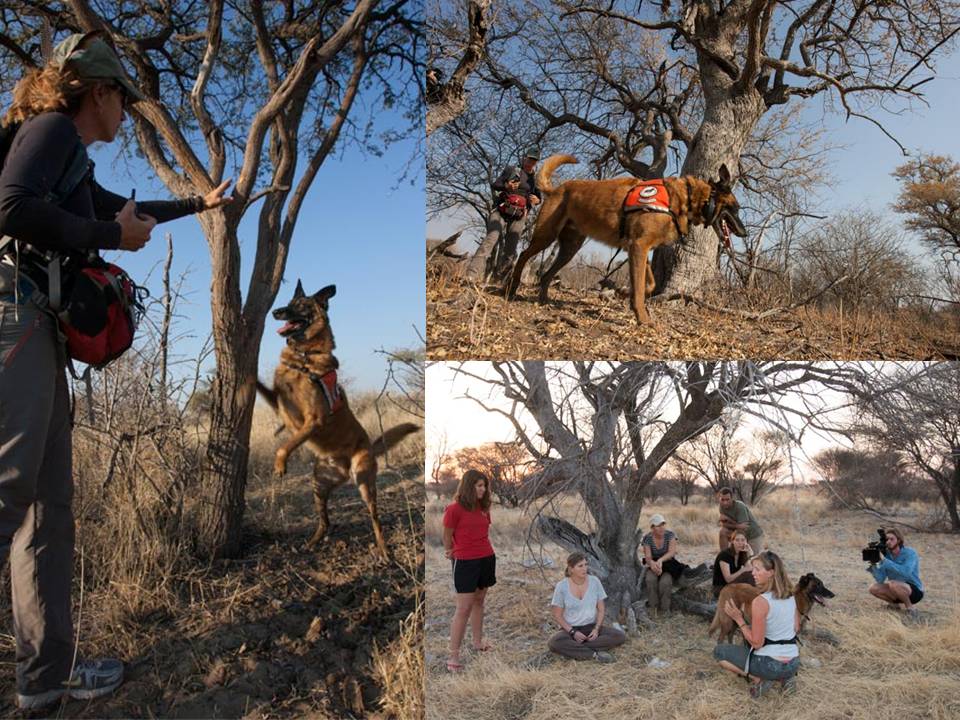|
With capacity building support from Wildlife Conservation Network (WCN), CCB undertook fully sponsored week long training in Financial Management Training by UK institution, MANGO (Management of Non Governmental Organisation) in Pretoria, South Africa. The training took place between the dates of 13 - 17 August 2012 and it was attended by Administration Officer, Boitumelo Mokgosi and Programmes Manager, Douglas Thamage.They received certification after and it was another milestone reached by CCB in empowering staff members so that they can executive their daily commitments with ease. Thank you to WCN for the sponsorship!
0 Comments
CCB was requested by the Department of wildlife and National Parks (DWNP) to participate in the Human Wildlife Conflict Coexistence Project in Northern Botswana. CCB provided support for improved kraaling, herding and the use of herding dogs to mitigate livestock predator conflict. The study area includes 13 selected villages located along the three primary wetlands in Northern Botswana, the Okavango Delta Panhandle, Chobe-Linyanti wetlands and the Makgadikgadi wetlands. The overall aim was to strengthen the capacity of rural populations to implement human wildlife coexistence strategies and facilitate coexistence. CCB carried out three components under the above mentioned project being to conduct 13 kgotla meetings in the selected villages in the focal areas, 3 training workshops for farmers and key community members in each focal are and oversee building of demonstration kraals in each focal areas. The last component being kraal construction was completed in August and three predator proof demonstration kraals were built in Parakarungu (Chobe), Moreomaoto (Boteti) and Beetsha (Okavango). The DWNP together with the village project committees facilitated the selection of the farmers with reference to their problem animal control reports. The kraals were fitted with shade net to create a visual barrier around the kraal fence. DWNP will benchmark on the demonstration kraals to build the remaining kraals for other selected farmers.
CCB was also invited to participate in the National workshop for Northern Botswana Human Wildlife Coexistence Project held in Gaborone. The workshop brought together the stakeholders to review and finalize the Draft Green Paper on Human Wildlife Co-existence and it was organized by Centre for applied Research in partnership with DWNP. Detection dogs trained to find scats have been successfully used in studies of kit foxes, grizzly and black bears, forest carnivores and other species that have low detection rates. Therefore, it was considered to be a potentially relevant method for the monitoring of cheetah and wild dog populations by the members of the IUCN Regional Strategy for Cheetahs and Wild Dogs in Southern Africa. Conservation detection dogs can be trained to locate cheetah and wild dog scats from great distances. A plan was developed for a pilot study to take place in the Ghanzi farmlands of Botswana and Liuwa Plains in Zambia in 2012.
Along with the detection dog survey, concurrent methods were also utilised to provide other methods of population assessment and allow a comparative study of each method. Experienced San trackers were used to locate scats in the same general areas as the detection dog team transects. In addition a motion camera survey took place over the same area. In the Ghanzi farmlands, the detection dog was not able to perform as expected due to the challenges of the environment. The region is characterised by heavily bush-encroached thorn due to cattle grazing management. This extremely thick bush coupled with the heat resulted in less distance being covered than estimated, as the handler and human portion of the team struggled to move through the bush and remain visual contact with the dog. While the dog found cheetah signs and several scats, the number of scats found and the difficult environment demonstrated this method is not appropriate for our Kalahari acacia bush environment. In contrast, the camera traps identified several cheetahs at each study area. The trackers were also extremely effective and found between 1 - 6 scats per search day. However, the dog performed much better in the more open environment of Liuwa Plains in Zambia. Therefore, initial findings indicate that the use of scat detection dogs to locate scats of cheetah and wild dog for population analysis has potential in open environments but is limited in thick, thorn encroached areas. However, in such areas there is great potential for the use of indigenous San trackers and motion camera studies to develop population estimates. This pilot project has contributed significantly to the development of ideal methods to produce estimates of cheetah and wild dog population densities In Southern Africa. Botswana Consumer Trade Fair is one of the biggest trade fairs in Botswana and it attracts a lot of people especially from Southern Africa. Just like it was norm, the 2012 fair attracted more 450 exhibitors and over 60 000 visitors making it the biggest platform for exhibitors to display, disseminate information and sell products and services off the stand so as to improve their brand visibility. The fair took place from the 23rd July until 29th July 2012. The second day of the fair marked the judgment of all stalls while the fourth day was the prize giving ceremony which was held in the evening. No one knew whether they were getting a prize or not and surprisingly, CCB scooped first position in the category of Non Governmental Organizations, it was indeed a night and week to remember as it was CCB’s first time at such country’s huge event and CCB managed to scoop a prize.This was indeed a true reflection of the hard work that CCB put at the fair throughout the week. The fair was attended by Boitumelo Mokgosi and Connie Sebati, administration and marketing officers respectively, and our Programs Manager, Mr. Douglas Thamage joined the team for the prize giving ceremony.
|
SearchArchives
May 2024
Categories |





 RSS Feed
RSS Feed
